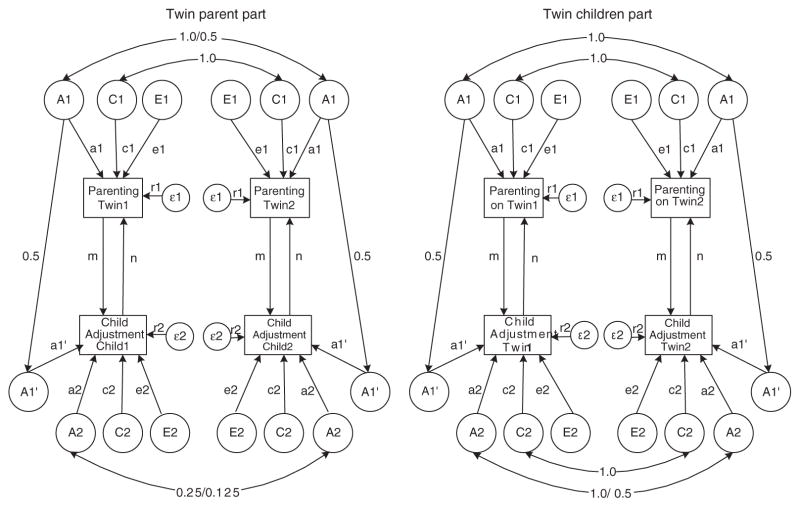Figure 1.
Extended Children-of-twins model (ECoT).
Note: The model is described in two parts: for twin parents and for twin children. Phenotypes Parenting and Child Adjustment are denoted in rectangles. Genetic (A) and environmental (C, E) influences are depicted in circles. The Parenting phenotype is influenced by genetic (A1), shared (C1), and nonshared environment (E1), while child adjustment is influenced by genetic (A1′ and A2), shared (C2), and nonshared environmental effects (E2). Measurement error (ε1 and ε2) contributes directly to the variance of both phenotypes. In the twin parents part, the genetic effects correlate by 1.0 or .5, depending on the twin zygosity. Shared environment (C1) correlated perfectly for both MZ and DZ twins. Genetic effects for children, or cousins, correlate by .25 or .125, depending on the zygosity of the parents. Shared environmental effects are uncorrelated because the cousins do not share the family. In the twin children part, genetic and shared environmental effects correlated perfectly for the parenting phenotype, because there was always the same parent rating both twins. For children, genetic effects correlated by 1.0 or .5 for MZ and DZ twins, respectively, and shared environmental effects correlated perfectly for both zygosity groups. Paths m and n denote reciprocity in the relationship between the phenotypes. Path m reflects direct environmental effect of Parenting on Child Adjustment, whereas path n denotes evocative processes in the relationship. Significant paths m, a1′ and a1 will indicate passive rGE, and evocative rGE will be suggested by significant n, a1′, and/or a2. Copyright © 2010 by the American Psychological Association. Reproduced with permission from Narusyte et al. (2008). The use of APA information does not imply endorsement by APA.

